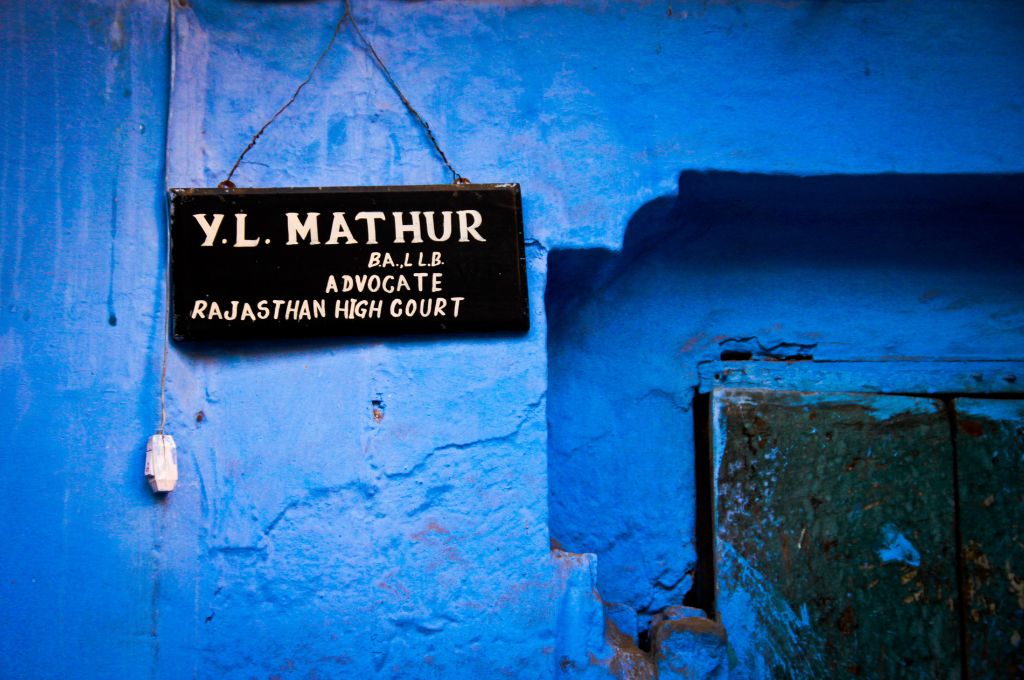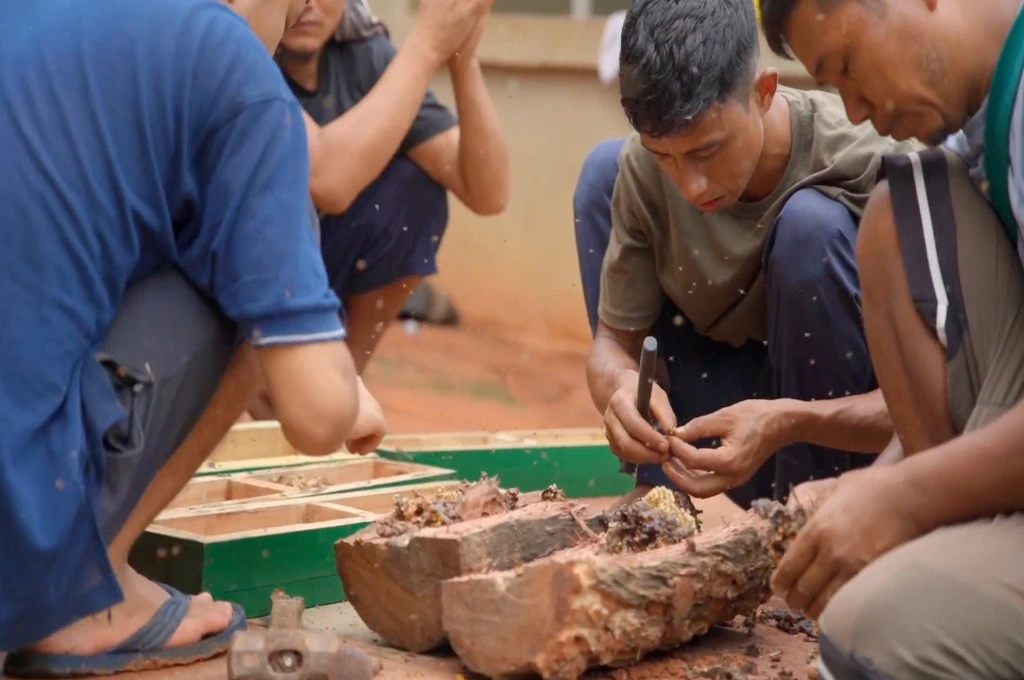Ayush* is a legal aid counsel providing free services for criminal cases to those who cannot afford lawyers, at the Karkardooma District Court in Delhi. He makes about Rs 5,000 a month, on average, he told IndiaSpend.
In April 2022, former Supreme Court Justice Uday U. Lalit said: “Legal aid to the poor does not mean poor legal aid. There has to be better standard, better quality and better level,” of legal aid, during a lecture in Karnataka.
But, for Ayush and several other legal aid lawyers IndiaSpend spoke to, there is little incentive to be part of the legal aid system: Pay is not commensurate with the work or the effort it took them to become a lawyer, payments from the legal aid services authority are often delayed, legal aid counsel are not respected as much as private lawyers in court, and they do not get any social security benefits as they are not employees.

“If lawyers will not be paid well, why will a competent lawyer empanel themselves as a panel lawyer/free legal aid counsel?” says Jeet Mann Singh, a professor of legal education and research at the National Law University in Delhi. “Thus, the quality of the service keeps deteriorating.”
India’s legal aid system
Under Articles 22 (1) and 14 of the Indian Constitution, legal aid is a right, and Article 39-A advocates the provision for free legal aid to citizens in need. Free legal services are provided under the Legal Services Authorities Act, 1987, and are operationalised by the National Legal Services Authority (NALSA).
Prisoners, undertrials, and petitioners who cannot afford private lawyers can seek free legal aid facilities through the NALSA wing located in every district court of India. Every state has its own State Legal Services Authority. As of March 2022, India had 50,394 (46,385 district + 4,009 high court) panel advocates or free legal service providers. A 2018 study by the Commonwealth Human Rights Initiative (CHRI) found that India has one legal aid lawyer per 18,609 population or five legal aid lawyers per 100,000 population.
The legal aid services also hire lawyers on retainer, selected from these panel lawyers, who are appointed for a fixed period and paid a monthly fee. A panel lawyer who is not hired on a retainer basis is paid per hearing. In addition to fighting cases, these lawyers also help with administrative duties, jail visits etc.
Legal aid fee lower than fee for a private lawyer
The minimum pay structure for legal aid lawyers is suggested by NALSA. For example, the minimum honorarium for drafting of cases like divorce, custody, memo of appeal, writ petitions etc is Rs 1,500 for panel lawyers, while for hearings of cases it is capped at Rs 10,000 per case. If one practises private law, the fee can be a minimum of Rs 20,000 going up to Rs 1 lakh, based on the competence and reputation of the lawyer, lawyers told IndiaSpend.

Ayush, the legal aid lawyer in Delhi, says that the fee amount per case is capped, despite how many hearings there might be. For a criminal case at the magisterial court in Delhi, Rs 18,000 is the limit. “So, if I appear for 30 effective hearings for a case, I should get Rs 21,600 (at Rs 720 a hearing), but I would get only Rs 18,000 as that is the maximum limit…How can you call this justified?”
Further, a free legal aid attorney, who did not want to be named for fear of being targeted by the DLSA for his comments, said that lawyers have to pay for printing or photocopying for the litigants’ documents and drafting expenses from their own pocket. This issue was echoed by panel lawyers of almost all DLSAs we approached–Delhi, Chamoli, Manipur, Sirsa and UP district courts.
The Superintendent, New Delhi DLSA, Amit Tanwar, said “panel lawyers can apply for advance funds for things like printouts”. But panel lawyers said that advances are often not released because of administrative reasons.
About 20% of legal aid counsels identified a lack of infrastructure, such as designated chambers for interacting with clients, 23% blamed the low honorarium and 34% complained about the delay in processing payments, as some of the frustrations with the system, said Singh of NLU, Delhi, who had studied the impact of legal aid services on quality of legal aid in India in 2020.
In Agra, Manju Dwivedi, a free legal advocate at the district level, earns Rs 5,000 a month as a retainer, for the last 10 years.
As per NALSA’s guidelines, a retainer lawyer should not get less than Rs 15,000 per month at district level and Rs 10,000 per month at the taluka level.
Further, payments are not assured. Bihar, for instance, as per CHRI’s 2018 report, had directed that if retainer lawyers do not attend court for 10 days in a month, they shall not be entitled to payment of honorarium for that month. The CHRI report also noted that Uttar Pradesh (UP), in a September 2015 letter, said that payments to retainer lawyers were under the 13th Finance Commission Fund (2010-2014) and as that period was over, they had not received any other funds from the UP government for future payments, and should not provide work to retainer lawyers.
The low fee impacts the number of legal aid counsel. Take for instance, Uttarakhand. Legal aid counsel Gyanender Singh from Chamoli district said that in the district, there are only two panel lawyers, and thus both are overworked. The payment, Singh says, is abysmal with a maximum limit for civil matters capped at Rs 3,000 per case and at Rs 750 for a jail visit with a maximum limit of Rs 3,000 a month.
We reached out to the Chamoli DLSA secretary Simranjit Kaur over phone but she did not respond. We will update the story when we receive a response.
The low pay also dissuades lawyers because it does not cover their costs of becoming a lawyer. Ayush spent around Rs 1 lakh per annum on college fees for five years, and then worked for three years before he was eligible to be a legal aid lawyer. “How can you then expect a good lawyer to work for such a low wage?” Ayush asked. He earns Rs 30,000 to Rs 40,000 in regular private practice, on which he spends non-duty hours, compared to the Rs 4,000-Rs 5,000 as free legal aid counsel.
Since panel lawyers are allowed to practise outside of their committed time to free legal counsel, many rely more on their private practice for their livelihood, impacting the quality of legal assistance offered, they say.

Delayed payments
The payments of free legal counsels are cleared through bill submission, a process that entails tedious requirements–like stamped/attested order required to get clearance of the bill, the requirement that a bill should be submitted after the case is finally disposed and within a year of its disposal (in Delhi)–the assurance of which is required in writing from the secretary of the respective DLSA.
According to the National Judicial Data Grid, nearly 60% of both civil and criminal cases take more than one year to dispose of at subordinate/taluka level.
Satinder Singh Gheek, a panel lawyer with Sirsa district court, told IndiaSpend that he had only received the payment of one bill of the six-seven he had filed in nine months.
Simpal Singh, who works as front-office staff (one of the duties allotted to panel lawyers), said “even if we are paid less, at least bills should be cleared timely”.
When DLSA secretary of Sirsa Anuradha (she uses one name) was approached to understand the reason for delay of funds, she responded with “this only NALSA can answer. We are here for checking, clearing the authentic bills submitted by empaneled panel lawyers”.
Ashok Kumar Jain, the NALSA secretary, had not responded to us by the time of publishing this story. We will update the story when we receive a response.
Funding legal aid
As per the 2018 CHRI study including 29 states and seven Union territories, per capita spending on legal aid in India is Rs 0.75, one of the lowest in the world. In 2019-20, as per Tata Trusts’ India Justice Report 2020, per capita spending on legal aid in India was Rs 1.05.
Legal service institutions receive funding from both NALSA and state budgets.
A study by Odisha High Court Chief Justice S. Muralidhar (when he was a Delhi High Court judge) in 2004 shows that the majority of the funds are utilised for administrative services, rather than legal aid itself.
Bias in allotting duties
Duties such as helping out on the front desk, jail visits etc. can help legal aid counsel make more money. But lawyers say there is a bias in who gets allotted this work, as the ‘favourites’ are assigned by the District Legal Services Authority. We reached out to the DLSA secretary in Sirsa, Anuradha. She brushed away such allegations saying, “I can speak for our district. What we see as competence, someone standing at the other end might conclude it as biases. But we allot duties based on competence and not out of favouritism.”
Sometimes, lawyers are asked to do tasks below their level of skill. “At the help desk and lok adalats [dispute redressal mechanism], on several occasions, we are asked to clear traffic challans, electricity bills, and even make an Aadhaar card! Is it the right way of using Lok Adalats?” said a lawyer who practises in Saket district court.
No social security
Panel advocates are not employed by legal services, and as such do not qualify for leaves or social security.
Seema* has been associated with the Juvenile Justice Board Legal Aid Services as a panel advocate for seven years now. “When I got pregnant, I wanted maternity leave. But there isn’t anything like that. In fact, there’s no leave-structure in place,” she said.
When Amit Tanwar, superintendent to DLSA, Delhi was asked about this issue, he explained that since these advocates are empanelled and not employed by NALSA, there are no leaves.
“Being empanelled is like being on contract,” Seema says, asking “which rulebook says that contractual lawyers cannot get leave?”
In September 2022, NALSA came up with defence counsel vacancies under the Legal Aid Defense Counsel System, where applications have been invited to hire permanent, free legal aid lawyers in the criminal section. These lawyers will have fixed salaries ranging from Rs 20,000 to Rs 1 lakh per month, depending on the population of the states where they will be deployed. They will also have leaves, though maternity leave is not currently mentioned as one of the benefits.
The Uttar Pradesh State Legal Services Authority in Lucknow has also advertised for this position in the month of August 2022.
“The new advertisement for fixed positions is a stepping stone towards betterment of the condition of the panel lawyers,” said Singh, the NLU professor. “However, a robust structure to ensure a speedy process for payments and a grievance redressal mechanism is also necessary.”
Legal aid: livelihood or social work?
Many who have been part of the legal aid system say that the work there should not be taken up as a source of livelihood but with the intent of helping those who cannot afford a lawyer and for the lessons it gives in practising the law.
“You should not expect a handsome honorarium for free legal aid service,” says Vikrant Choudhary, now an advocate at Saket court in New Delhi. “It is social work and should not be seen as a way to earn money.”
S. Tiwari, now a senior criminal advocate practising in Saket court, said: “Whatever I learnt as a free legal aid, I couldn’t have learnt it from anywhere else. I still feel grateful for those lessons which sharpened my path to becoming a successful criminal lawyer. “
But neither Tiwari nor Choudhary continue to work as legal aid lawyers, unless asked to do so by the court.
Similarly, a legal aid counsel from Lucknow said they had agreed to join as they wanted to genuinely help the needy, but the endless cycle of delayed reimbursement, lack of infrastructure for free legal aid, and little respect from seniors in the court, made him quit within a year-and-a-half of joining.
“Our issues are mostly unheard. How are we supposed to deliver the best? ” says Ayush.
All of these issues might have still been overlooked, if their work was recognised by the judicial system, said Naman Jain, a panel lawyer at Saket district court. “I believe, if there can be any credible acknowledgement of our work, in the form of bonus or award or anything, this can encourage us to continue. But reality is, we don’t even get acknowledged at court hearings,” Jain said. “The kind of treatment a regular or a private lawyer gets in front of a judge or magistrate, we don’t even get half of that attention or priority. There’s no respect for our free legal service.”
*Name changed on request.
This article was originally published on IndiaSpend.





